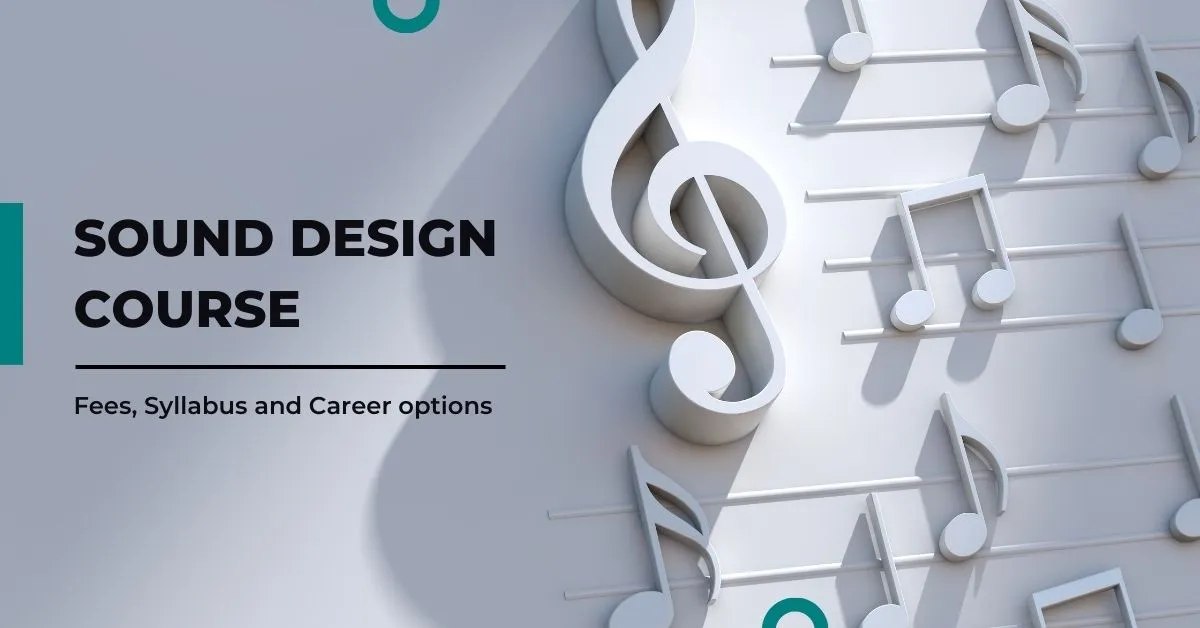


26, May 2023
In the world of entertainment and media production, sound plays a crucial role in captivating audiences and enhancing the overall experience. Sound designers are the talented professionals responsible for creating and manipulating audio elements in films, video games, advertisements, and more. If you have a passion for sound and a desire to pursue a career in sound designing, this blog post will guide you through the essential details of sound designing courses, including fees and course structure.
Before delving into the specifics of fees and course structure, let's begin by understanding what sound design is all about. Sound designing involves the art of creating and manipulating audio to convey emotions, set moods, and enhance storytelling. It encompasses various aspects, such as sound effects, dialogue editing, music production, Foley, and mixing.
The fee structure for sound designing courses in India can vary depending on several factors, including the institution, course duration, location, and level of expertise offered. Here is a general idea of the fee range you can expect for sound designing courses in India:
1- Certificate or Short-term Courses:
The fees for short-term or certificate courses in sound designing in India typically range from ₹10,000 to ₹50,000. These courses are usually of shorter duration, ranging from a few weeks to a few months.
2- Diploma or Undergraduate Programs:
Diploma or undergraduate programs in sound designing in India can have a wider fee range. On average, the fees can range from ₹50,000 to ₹3,00,000 per year. The total fees for a diploma program typically span one to two years, while undergraduate programs may extend to three or four years.
3- Postgraduate or Master's Programs:
Postgraduate programs in sound designing, such as a Master's degree, tend to have higher fees in India. The fees for these programs can range from ₹2,00,000 to ₹8,00,000 or more, depending on the institution and program duration.
It's important to note that these fee ranges are approximate and can vary significantly based on the specific institution and location within India. Additionally, some institutions may offer financial aid, scholarships, or installment payment options to assist students in managing the fees.
When considering the fees, it's crucial to also evaluate the reputation of the institution, faculty expertise, infrastructure, industry connections, and placement opportunities to ensure a quality education and a strong foundation for your sound designing career.
It is recommended to research and compare different institutions and their fee structures to find the one that best fits your budget and provides the desired level of education and resources. Additionally, reaching out to the institutions directly will provide you with the most accurate and up-to-date information regarding their fee structures and any financial assistance options available.
While the specific syllabus for a sound design course may vary depending on the institution and program, here is a sample outline of topics commonly covered in a comprehensive sound design course:
Introduction to Sound Design:
Audio Fundamentals:
Digital Audio Workstations (DAWs) and Tools:
Recording Techniques:
Sound Editing and Mixing:
Foley Artistry:
Sound Effects Design:
Dialogue Editing and ADR:
Music Production:
Sound Design for Visual Media:
Mixing and Mastering:
Industry Practices and Professional Development:
It's important to note that this syllabus is just a general overview, and the depth and specific topics covered may vary based on the duration and level of the course. Institutions may also include additional elective modules or specialized topics based on their curriculum and expertise.
A career in sound design in India offers a range of opportunities across various industries, including film, television, advertising, gaming, animation, music production, and more. Here are some popular career options for sound design graduates in India:
Sound Designer/Engineer:
Sound designers/engineers work on the creative and technical aspects of sound production, including recording, editing, mixing, and mastering audio for various media projects such as films, TV shows, documentaries, commercials, and video games.
Foley Artist:
Foley artists create and record sound effects to enhance the realism and immersion of visual media. They use a variety of props and techniques to recreate and capture everyday sounds like footsteps, door creaks, and object movements.
Dialogue Editor:
Dialogue editors specialize in editing and cleaning up dialogue tracks. They ensure that speech is clear, synchronized with visuals, and free from any background noise, clicks, or pops.
Music Producer:
Sound design graduates with a musical inclination can pursue a career as music producers. They compose, arrange, and produce music for films, TV shows, commercials, games, and other multimedia projects.
Audio Post-production Engineer:
Audio post-production engineers work on the final stage of sound production, where they mix and master all the audio elements to create a balanced and polished sound for different media platforms.
Game Audio Designer:
Game audio designers specialize in creating immersive soundscapes and interactive audio experiences for video games. They design and implement sound effects, music, and ambient audio to enhance gameplay and storytelling.
Live Sound Engineer:
Live sound engineers manage the sound production for concerts, theater performances, events, and live broadcasts. They handle equipment setup, live mixing, and ensure high-quality sound reinforcement during live performances.
Studio Technician:
Studio technicians work in recording studios and assist in the setup, operation, and maintenance of audio equipment and recording sessions. They provide technical support to sound engineers, artists, and producers.
Sound Editor for Animation:
Sound editors for animation specialize in creating and editing sound effects, dialogue, and music for animated films, TV shows, and web series.
Academic/Teaching Positions:
Sound design graduates can also pursue careers as instructors or professors in educational
institutions offering sound design or music production courses.
Embarking on a sound designing course can open up exciting opportunities in the entertainment industry. By investing in a sound designing course, you gain valuable knowledge and practical skills required to excel in this creative field. Remember to thoroughly research different institutions, consider the fees, and carefully evaluate the course structure to ensure it aligns with your career goals. Whether you aspire to work in film, gaming, or any other multimedia industry, a sound designing course can be your stepping stone to a rewarding career in sound design.